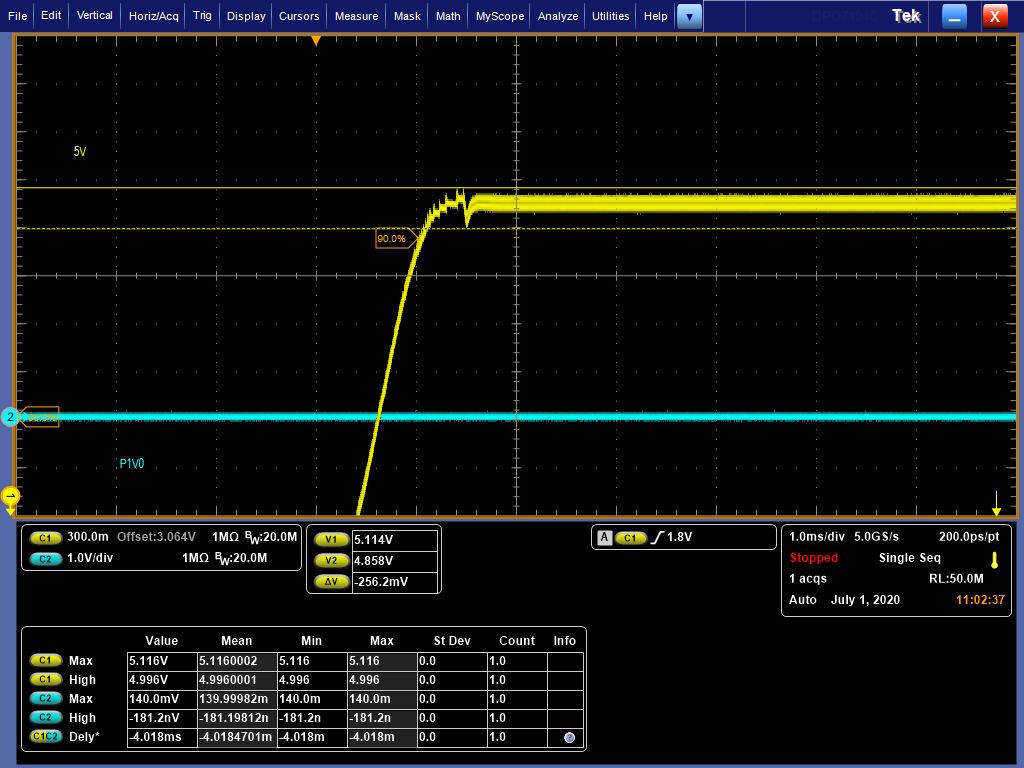Hi team,
My customer is using the TPS548D22 now. When we do the test with 12v input 5v output test with FCCM mode setting. We find the Vo has a voltage drop. What's the reason of the voltage drop here? Whether it's auto skip mode during startup period? Thanks.



